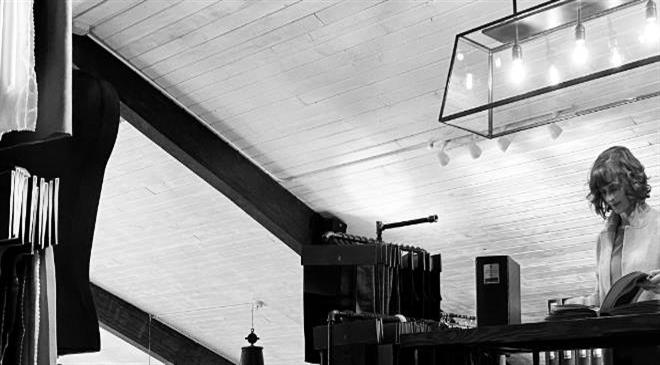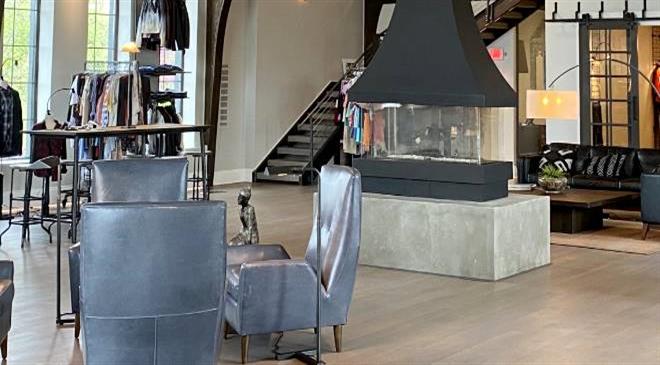Desire for companies to go smaller in production
Stars is a leading apparel design and manufacturing group that supports lifestyle apparel brands. In an interview with Fibre2Fashion, Bret Schnitker, CEO/President, Star Design Group, speaks about the company’s expertise in textile and apparel manufacturing for over 20 years, its commitment towards sustainability and how it is bringing innovation to its offerings.
Please brief us about the growth story of Stars Design Group--the initial challenges faced and how the company progressed and established its name in the industry?
Stars Design Group, Inc was founded in 2000, by industry professionals who gained their experience in multi-billion-dollar private label retail conglomerates. Using that experience while continuing to develop ongoing expertise in textile and apparel manufacturing for over 20 years, the current footprint supports 67 factories in 14 countries. The industry is ever-changing and positioning the company to leverage skill, talent, and technology keeps Stars at the forefront of emerging markets and trends, offering innovative design and manufacturing tools, in development of fashion and apparel for a wide variety of clients.
The industry has always faced challenges, one of which is pricing. In the sector of retail, consumer expectations on price have not risen to the same rate of annual inflation as other commodity categories. The reality is retail pricing has not risen in line with other commodity costs, driving the need for low-cost fabric and production, especially in the fast-fashion model, which supports consumer appetite - cheap and now. Layering price challenges with managing employee welfare, labour costs, fibre and fabric costs, supply chain challenges, quality initiatives, and the growing sustainable demand (which far exceeds the supply) are the few but constant challenges to traverse in our industry.
Having great manufacturing partners with dedicated, experienced teams worldwide, and a leadership team internally that has a long history in the apparel space has allowed us to navigate the complexities of the industry over the years.
How have the tastes of consumers altered in the current scenario and how are you leveraging that?
Across men and women, more comfort – stretch – amazing new fabric technology that supports great hand feel, with comfort. People want to get back to celebrations and parties as a norm, so we are also seeing a return to fun glamour dressing yet weaving in elements of comfort.
Globally, there is more focus on sustainability today. What are your commitments towards sustainability and reducing carbon footprints?
No question sustainability is of the utmost importance. By 2030, consumer demand is forecasted to require resources equal to two earths. This is a complicated landscape. Sustainability has its challenges as demand far exceeds accessibility and supply. Additionally, most of the choices are expensive, limited in range, and difficult to secure. It’s still very exclusive. Each of our clients pursues this journey to different levels, but we have strong support functions from fully sustainable fabrics, leather, and facilities.
Another key component of sustainability that is widely available is factories that are certified for high standards for employee welfare, at SDG over 95 per cent of our factories are certified to the highest standards with others working toward that. To date, we have eight fair trade facility partnerships.
For those interested in committing to sustainability we have a variety of options based on client goals. Among the options include (but not limited to):
• 100 sustainable leathers from farm to fashion.
• Sustainable/eco-friendly fabrics
• Sustainable dyes
• Zero-waste knitting
We were an early adopter of 3D design, embracing this technology nearly 10 years ago. This technology has several benefits, but it can also support eco-friendly initiatives. With 3D, clients can more accurately visualise their designs, which can reduce sampling, reducing landfill waste.
What are your strengths in comparison to other big players?
Anyone that survives in this industry over many years has developed a model that works for them and their client base. I believe our model is unique as its ever evolving with the global marketplace. “Evolution not Revolution” is our key mantra. Change is never easy, but it is constant in the world, and we must be focused on implementing key strategies and business solutions that work for clients today, not dated solutions in a modern world.
There are multiple countries that tout design to delivery. We embrace technology and have been early adopters of many leading innovations that visualise design, improve quality, fit, timing and transparency to our customers. Additionally, with our global footprint, our ability to be nimble in manufacturing and logistics provides us the opportunity to adapt to rapidly shifting dynamics (be the impact of COVID to supply chain, to changing tariffs, to the ability to support unique client initiatives).
Another core strength is our in-depth understanding of textiles and technical expertise. We have a test that we share with others in the industry to gauge technical knowledge. On average, out of 120 questions, most answer 20 correctly.
This is no surprise. Technical expertise isn’t taught in our schools and America abdicated manufacturing many years ago. We deeply understand all facets of apparel and have great technical expertise.
A resource we have developed is one of the largest fabric libraries in North America. With over 30,000 fabrics in all categories, we created the library to help minimise the time and investment companies pour into finding the right fabric for programmes. Rather than needing to travel the world to find fabric, we brought the world to our library.
We recognised early in COVID that many designers were let go which encouraged us to launch United Coulture, a fashion design collective that not only provides an opportunity for designers to collaborate on projects we have in the house, but also provides recognition to potential clients worldwide. One of our dear relationships, Lula Mena based in El Salvador, develops an amazing jewelry collection from all sustainable materials while supporting local women in the country with fair wages. She is an agent of social change. We love working with others in the industry that have such an impact. Lula truly is an inspiring story.

What disruptions has the pandemic brought into your business?
The disruptions are not unique in our industry, as the rolling shutdowns occurred country by country, production backlogs started to occur, and as certain geographic sectors opened, then shipping supply chain issues became the next largest logistical complexity. Due to the lack of trade during COVID, containers were not repositioned appropriately, leaving them in what is now the wrong places worldwide. Demand has risen dramatically along with a backlog created by production slowdowns, shutdowns, and closures. Certainly, factories have experienced a roller coaster of challenge and emotion, with large cancellations due to overreaction from clients on COVID declines, and now production is sitting waiting to find space for delivery to markets that are depleted of inventory.
We are thankful to have many long relationships in manufacturing (many of them generations deep), and a vast global network. This has helped us to mitigate many of the challenges others in the industry are halted by.
How are you bringing innovation to your products and processes?
From the beginning, we set out to create a company that combined talent and technology to elevate the client experience and our offerings. Below are some of the innovations we interact with daily:
• Alvanon – brings the science of fit, ensuring consistency and transparency in fit
• Browzwear, Clo & Optitex (3D design early adopter), animation with aviators using Alva forms, full digital runways
• VDP (Virtual Development Program to streamline approvals in a digital world)
• BeProduct - state of the art PLM - we were the beta for the development of this programme
• SILQ - we are a beta for this new programme which will add transparency and accountability to the manufacturing process
• Evolution STL - we are partnered in the world's most innovative whole garment knitting facility
• Digital Weaving
Do you see nearshoring increasing in the apparel/fashion industry as a result of the pandemic? Is Latin America benefiting from it?
Just prior to COVID, we were requested to consult for the Department of Trade to develop more business out of El Salvador. It was a great experience to meet with the Minister of Trade and the many people who make up the current manufacturing landscape. With the rise of the boutique brand industry, some Central American factories might consider rethinking how they set up production for the current economy. Certainly, saving shipping time is a positive and they should see more benefit than they are currently but the ravages of COVID through the supply chain are still not complete. As far Asian countries shut down and the need to replace production grows, looking to Central America will certainly become a part of a good portfolio.
To help foster the development of apparel manufacturing in Central America, we worked with the Commercial Law Development Program (CLDP) to develop an educational podcast called Business Threads. The podcast utilises expertise from Stars Design Group, Inc community and is available in both English and Spanish. It provides insight into our mentorship of factories in El Salvador with the CLDP.
What are your main struggles now and how do they differ from the times before Covid struck?
Our US customers live in a microwave society, everyone wants things quickly. Amazon has set new standards and expectations, however further up the supply chain--raw materials are in short supply, costs are rising, COVID shut down waves continue to happen country by country, and as discussed above--ports are clogged with no resources to move freight quickly. We have been fortunate throughout COVID to maintain almost a 90 per cent on-time shipping record.
A trend we are experiencing is the desire for companies to go smaller in production, reducing quantities. In a system set-up for larger minimums, it is a challenge to motivate factories to take on small production, especially with an ever-increasing backlog and increasing demand.
Which are the top regions/apparel manufacturers worldwide you supply your products to?
orth America, Europe, Asia

How is the US-China trade war and Brexit affecting your business prospects?
The largest impact is that it simply raises costs to the end consumer. There are very few reputable economists who have ever supported tariffs. It is unfortunate that the US has taken this stance versus other more effective solutions. For us, we are globally balanced, so it simply means we must work with the needs of our client base to understand the best portfolio for all the products they need to purchase.

What are your long-term plans as a company?
We have several initiatives to support our industry and clients. Our podcast clothing couture is now listened to in 57 countries by tens of thousands of listeners. We plan with season 2 to continue dialogue about key topics in the industry and speak with industry leaders who are paving the future of this sector. We have grown our consulting arm, as it’s a challenging landscape which we have navigated successfully over the years. We have just completed our acquisition with some wonderful partners of INSPR, a unique and powerful DTC model harnessing the skill, expertise, and following of key influencers. Currently, we have several offices around the world and continue strategic office expansion conversations into France and Vietnam. Supporting the next generation of designers, entrepreneurs and technicians we continue to be deeply invested in education, serving on a number of advisory boards and guest lecture requests.
Which of your products have strong demand worldwide?
Equally capable is womenswear and menswear across all categories by intent. The only category we are not currently producing is shoes. We live in a connected world and trends are somewhat fluid across most markets. In both categories, there is substantial demand for everyday comfort and loungewear.




